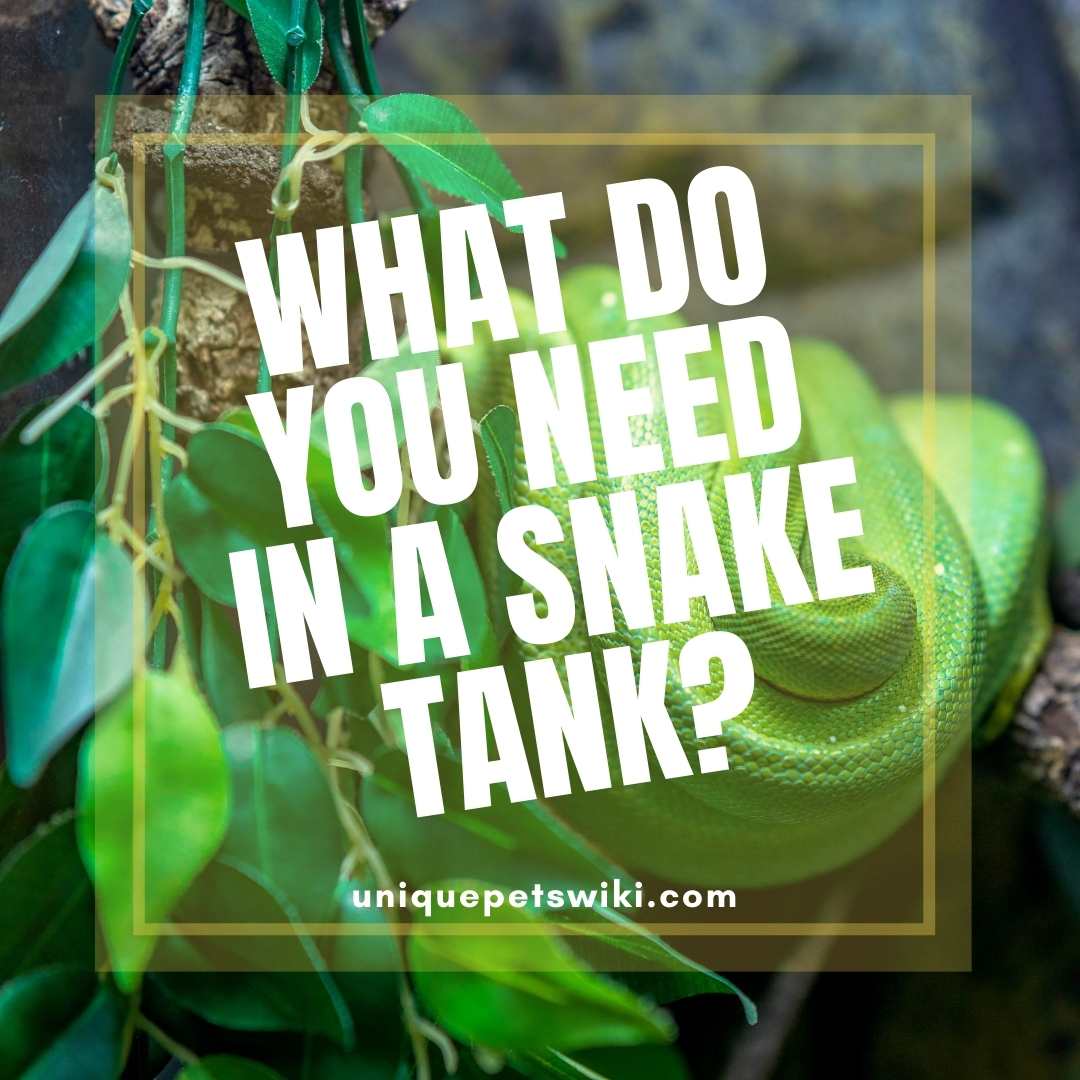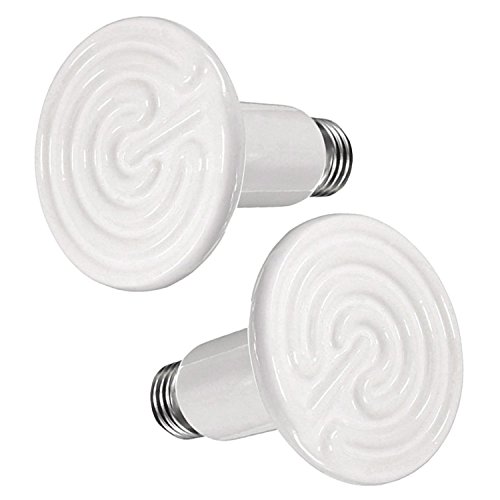If you are planning to get yourself or your loved one a pet snake soon, you must be wondering what other supplies you need to get with it and its tank. For your pet snake’s comfort in the cage, it needs various appliances in the enclosure.
Therefore, you need to have an understanding of what to put in a snake tank. It is also necessary to understand your snake pet’s unique needs as some of them have specific needs than other pet snakes.
Contents
Snake supplies list
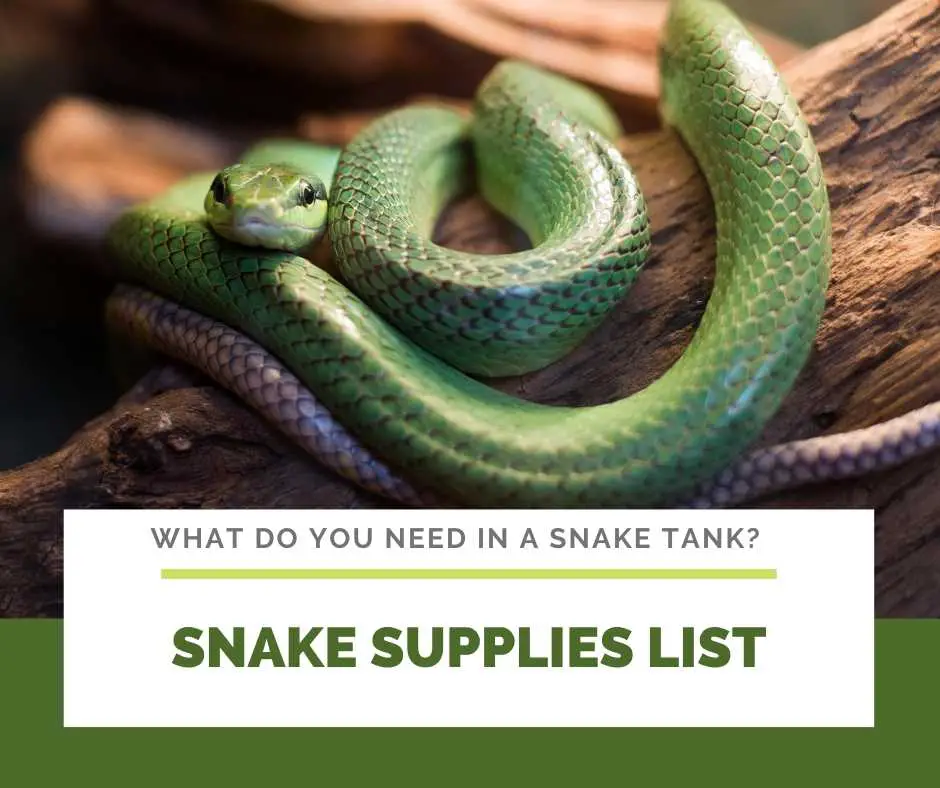
In this article, we explain the pet snake’s supplies that boost its health within its cage. They range from heating devices, furniture, hiding spots, climbing branches, and other items necessary for your pet snake.
- Heating Devices; such as heating lamp, Under Tank Heaters
- Snake Hides
- Water Bowls
- Snake substrates
- Lighting Equipment
- Humidifying Equipment
- Enclosure Branches
Heating Devices
A heating device should be in the list of items to be put in your pet snake’s tank. Similar to all other reptiles, snakes depend on their environment to regulate their body temperatures.
It is one main distinction between mammals and reptiles. Snakes cannot control their body temperature from within, and they need some source of heat and cooling. Therefore, you need to provide a heat source for your pet snake.
Each snake species has its unique temperature requirements. So, the first step that you need to take is to research the specific snake species that you have or that you intend to keep. Once this is identified, you will need to get some sort of device to provide the best heater for snakes.
There are different approaches used for heating snake tanks, and the two most popular are under tank heaters and heat lamps. Either of the two options can be used in the cage, but there is no need to use both approaches at the same time.
Choosing the right heating material will also depend partially on the size of your cage, the species of the snake you have, and the material used to make the tank, whether it is glass, plastic, or wood. You also need to consider the amount of ventilation available in the terrarium or cage.
Together with your heating appliance, it is recommended to also invest in a rheostat. It helps in dialing the output of your device up or down as needed.
Furthermore, it allows you to attain the exact temperature required in the cage. What’s more, it will enable accurate readings for the enclosure compared to using a thermometer.
Heating Lamp
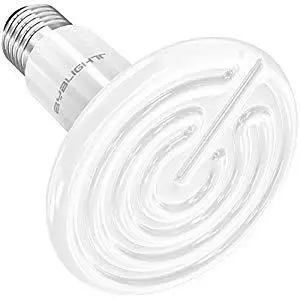
A heating lamp comes in different forms with ceramic light bulbs and heat bulbs. A ceramic light bulb can is a bulb that produces no light but only heat. Most ceramic bulbs have a dark reddish color and look quite similar to infrared rays.
Using it is simple as it only requires screwing into a dome lamp. You need to be cautious by ensuring the bulb does not get too close to your snake just to avoid burns and other health problems.
- ✔ The 75W infrared heat lamp is made of solid ceramics element, it has a perfect heat radiation feature and no light emitted, not disturb reptile's normal sleep schedule (day or night), great for pet, lizard, coop, chicken, turtle, snake, chameleon, bearded dragon
- ✔ This ceramic heat lamp is simple and easy to install, just screw it into a standard porcelain E27 screw socket (ATTENTION: Use only with a porcelain socket, because the plastic socket may melt the lamp holder)
- ✔ This white heat lamp bulb is ETL Listed, input voltage is AC 90-120V, power is 75-Watts, full size is diameter 2.95 inch x height 3.94 inch
- ✔ This infrared ceramic heat emitter bulb is the perfect 24 hour heat source for reptiles and amphibians. It could last 9000-15,000 hours, even longer
- ✔ This bulb‘s surface temperature is very high when working, please do not use your hand to test the temperature. Do not touch the heat lamp immediately after turning off, please wait at least 1 hour to cool down. Also please adjust the distance between the heat lamp and the pets
Last update on 2022-12-30 / Affiliate links / Images from Amazon Product Advertising API
You may also opt to use a heat bulb. Heat bulbs that you can put in your snake tank can either be white light or red light. White light bulbs are also referred to as incandescent, while red light bulbs are infrared.
Heat bulbs are simple but very effective providers of heat in snake tanks. You need to place the dome lamp on the cage where its heat radiates uninterrupted into the tank. For practical use, ensure that the top lid is not made of plastic or glass; it needs to have a screen lid cover.
Under Tank Heaters
Most under tank heaters available in the market today have some form of adhesive backing. They have peel-and-stick support. When installing, it is easy as it entails peeling off the glued section and sticking the heat pad under the cage.
Once it holds, you can plug it into the power. These heaters radiate heat upwards from the cage’s bottom. It is known as belly heat as it warms your snake from the belly up.
When using an under tank heater, it is necessary to use a rheostat to control output. They can be pretty hot to an extent where the glass on the cage may crack. These under tank heaters are available in the form of tapes and pads.
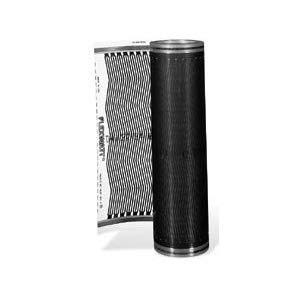
An under tank heat tape gets stuck at the bottom of the snake’s tank. A familiar brand of heat tape is Flex Watt. The only fact to note when purchasing this product is that the Flex Watt tape is sold separately. You need other apparatus such as power cords, insulators, and connector clips.
Last update on 2022-12-30 / Affiliate links / Images from Amazon Product Advertising API
The under tank heat pad is also stuck at the bottom of the terrarium. The difference between the pad and the tape is that the pad comes with a power cord. Therefore, installation is easy as it only requires sticking it at the bottom of the tank and plugging it into a power outlet.
Snake Hides
You also need to get your pet snake some hiding areas. Best snake hides is a form of furniture that enables the animal to conceal itself. The snake feels the need to get some privacy some times. You can purchase these hiding spots from a reptile supply store, or you can make a DIY version.
Last update on 2022-12-29 / Affiliate links / Images from Amazon Product Advertising API
In the wild, snakes have numerous areas where they can hide. They can do it under the rocks, logs, and burrows that other animals have created. Your pet snake’s instincts make it find it necessary to hide at times. Therefore, it will be unfair to the pet if you put it in a cage without a hiding spot. The lack of a hiding spot could stress your pet snake over time.
Stress in snakes is something that you want to avoid, but when it happens, it manifests in the form of illness, your pet refuses to eat, or other conditions relating to severe inactivity. You can prevent it by getting a hiding spot for your snake.
Water Bowls
Your pet snake needs to quench its thirst from time to time. You should always provide clean water in the cage at all times. A water bowl becomes necessary inside the tank. While you may not see your pet snake drinking all the time due to its secretive nature, it needs water whenever it feels like drinking.
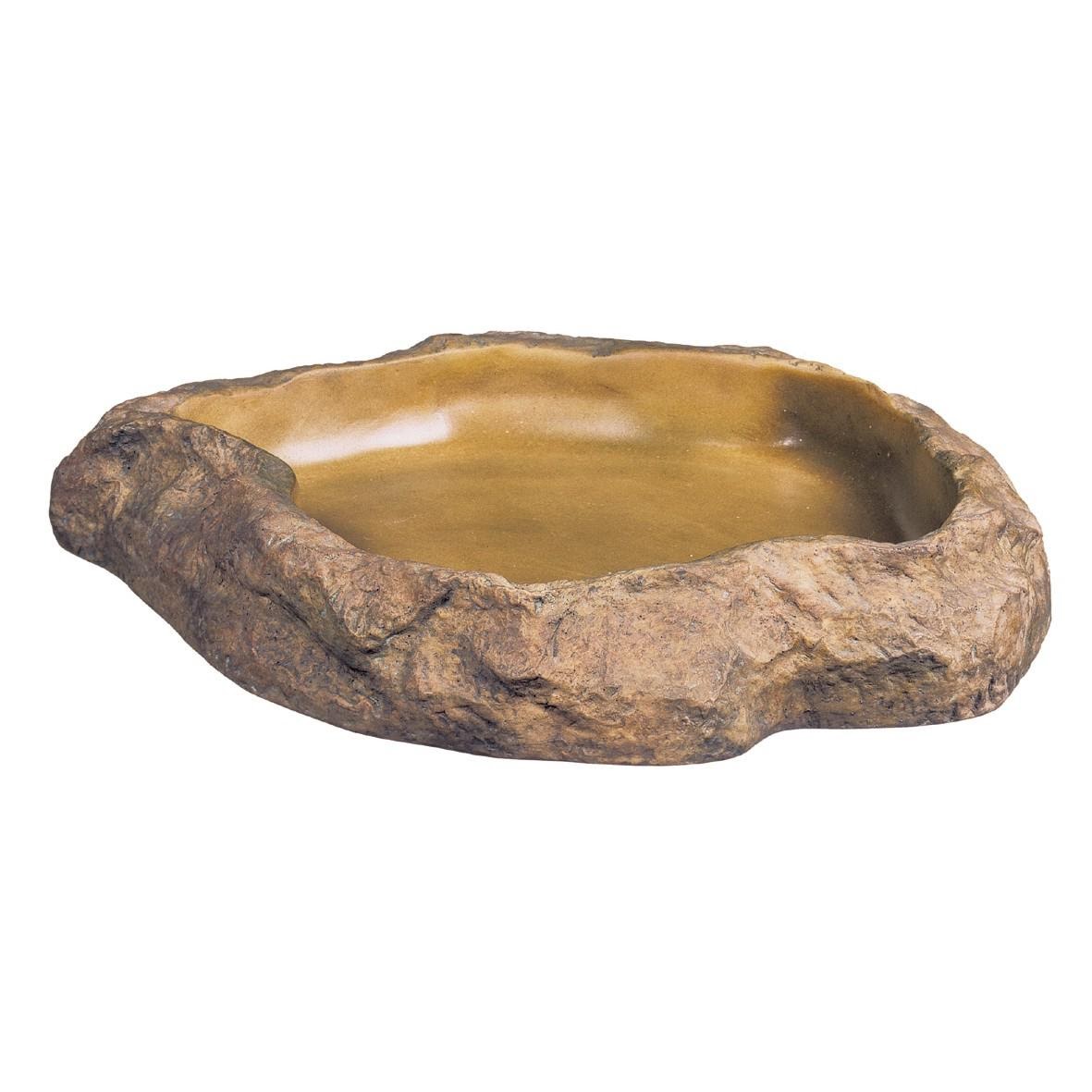
You may find some articles advising you to provide water for your snake every three days or every other day, but that is an unnecessary complication. We recommend that you maintain a bowl of clean water in the cage at all times, and your snake will drink whenever it gets thirsty.
When selecting a water bowl, you need to consider the size of your tank. It should also be appropriate for your snake. A wider bottom is necessary to avoid tipping. You can select any material for your snake’s water bowl.
A plastic bowl or one made from a plastic composite may be ideal since it is easy to clean. Recent versions of plastic bowls are also designed to resist bacteria, which is an added advantage.
Last update on 2022-12-30 / Affiliate links / Images from Amazon Product Advertising API
You may find your snake soaking in the bowl often, and you should clean it regularly to ensure clean water is available at all times. You also need to consider having a nonslip rubber bottom on your bowl to ensure it sits well in the cage.
Substrate
A substrate is another necessity in your snake cage. The substrate is the material that lines your cage’s bottom. Snake keepers go for different types of material for the substrate.
You may have seen some keepers and breeders using newspapers. Other people use cypress mulch, and others use aspen shavings. While they are all good materials for use, each has its advantages and disadvantages.
When selecting the ideal substrate for your pet snake, you need to consider its specific care requirements. Some species have unique needs that need to be considered. For instance, if your snake’s habitat is subtropical, it will require a higher amount of humidity. Therefore, cypress mulch will be an ideal substrate compared to aspen shavings.
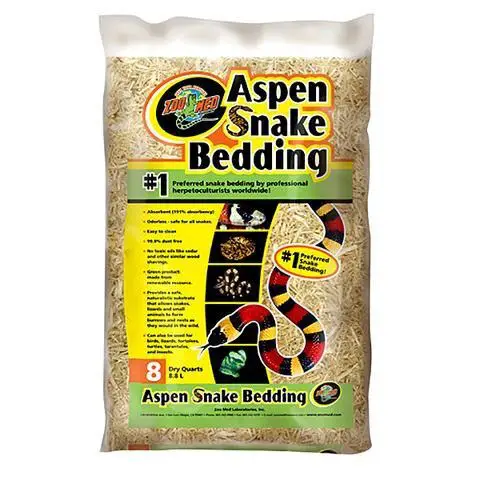
You need to research the care needs for your pet snake, especially in captivity. Furthermore, when selecting, a suitable substrate is one that can retain moisture well, and will not give off order. It should not have toxic chemicals and should not be easily ingested by the snake.
Last update on 2022-12-29 / Affiliate links / Images from Amazon Product Advertising API
If you have a burrowing or non-burrowing pet snake, you need to consider using cypress mulch, coconut fiber, or aspen shavings. These items do not hold the risk of impaction, and they retain moisture well.
They are good at controlling odor inside the snake tank. While newspapers and paper towels are also excellent and free options, they are not ideal for burrowing snakes and lack tolerance to moisture.
Therefore, when getting substrate for your snake, consider cypress mulch, aspen shavings, coconut fiber, artificial turf, paper towels, carpeting, and newspapers based on your snakes’ needs.
Lighting Equipment
While all the products we have discussed so far are more or less straight forward, a first-time snake owner finds hardships when it comes to lighting.
There is a lot of mixed information and misinformation on the internet on how to handle this issue. However, do not worry as we are here to make all this clear for you.
One aspect of consideration is the required UVB lighting for your snake. While some reptile types require ultraviolet light to remain healthy, snakes do not need as much UV light as say, chameleons and bearded dragons. As a matter of fact, most snakes can live for long in captivity without requiring supplemental UV light.
However, we still believe that they benefit from it since they are exposed to the UV light while in the wild. It also gives your snake a proper light cycle. In case you have placed your snake’s tank in a well-lit room near a window, it will experience the necessary light cycle.
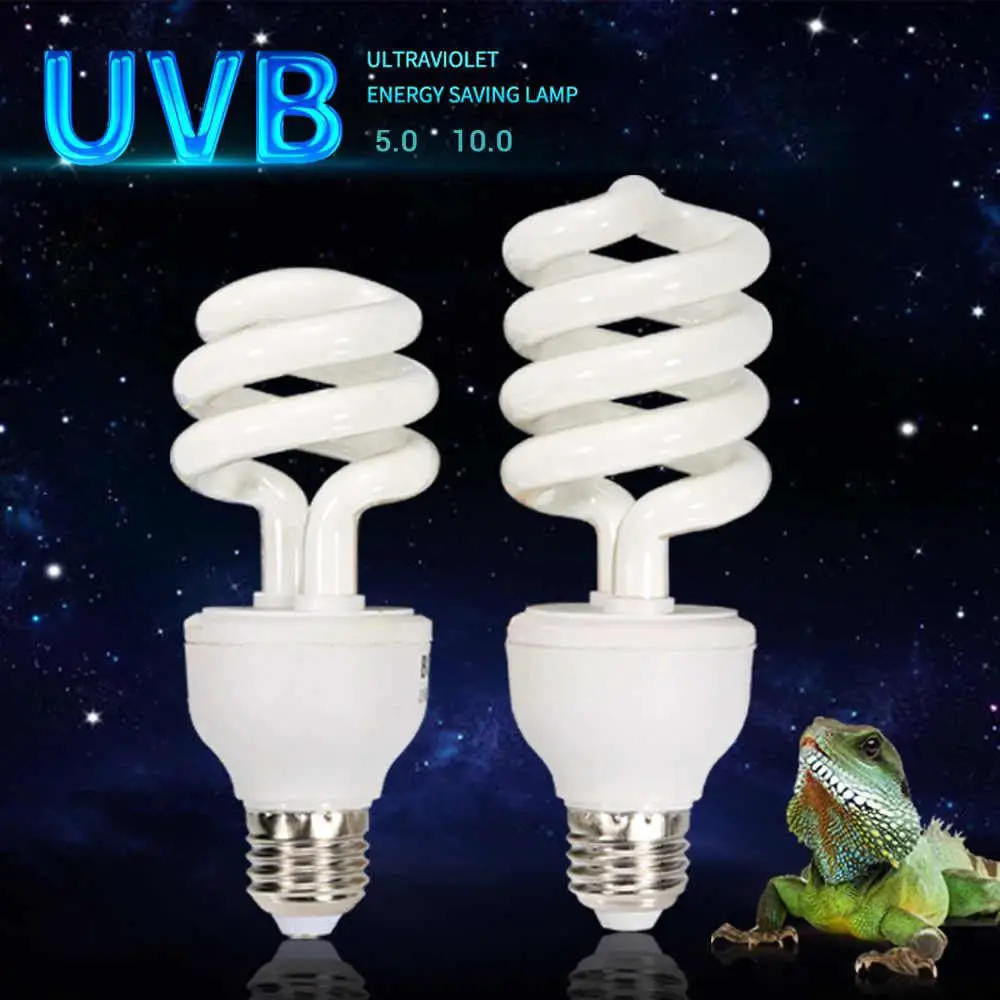
If the snake is in a dark room, it will need some supplemental UV light daily. It can be fixed in the form of fluorescent bulbs that emit UVB light.
A timer is also necessary so that they are only lit for a specific amount of hours per day. You can check the particular needs of your snake, but 10 hours per day should be sufficient.
Humidifying Equipment
Your snake needs the right moisture in its environment for it to thrive properly. Investing in a hydrometer is necessary for the pet’s cage. It enables you to know how much moisture is in the air, and if it falls below the requirement for your snake, you should humidify the reptile area.
Whenever necessary, you should spray the area with a mister, add moistened moss or add more water dishes. Moisture is especially essential for your snake to shed without problems.
Enclosure Branches
The walls in the snake tank and raised items may not offer the best climbing experience for our snake. While not all snakes enjoy climbing, some of them do like perching, and a branch or vines add decorative properties to the cage.
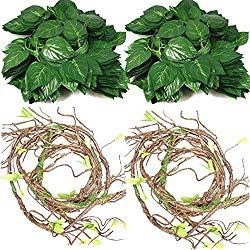
You can add a branch into the cage. Such a branch should not have been sprayed or treated with chemicals. Branches are especially crucial for arboreal and semi-arboreal snakes. It helps in mimicking their natural habitat. The coloration of the branches should even resemble those in the snake’s natural habitat.
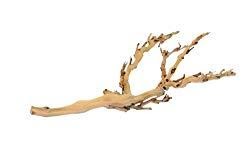
There is a wide variety of these climbing items, including vines, branches, and driftwoods, among others. What you need to consider is your snake’s capability climbing needs, to help your pet snake have the natural habitat and no toxins in the equipment.
What Not to Put in a Snake Tank
Substrates to Avoid
Some substrates may be good for other pets, including other reptiles that can harm your snake. If the substrate is not odorless, it has received treatment with toxic chemicals, or it causes a risk of ingestion or impaction, it is most likely unsuitable for your snake. The following are some of the substrates that you must not put in a snake tank.
Sand

If you visit any pet store, you will most likely find sand available in numerous colors that can match your decoration design. While it might be aesthetically pleasing, it is not ideal for a snake. The key reason is that your snake can burrow in the sand, which may create problems if it swallows the sand.
If ingested, the sand can cause impaction in your pet snake. It can also get under the snake’s scales. It also gets soiled easily, which means you must remove all of it when cleaning the cage and replace it with a fresh batch.
While it is difficult to clean, it lacks odor-controlling properties and also does not hold moisture properly. As such, it has more downsides than its aesthetic appeal.
Cat Litter
Cat litter is unsafe for reptiles, especially snakes, due to several reasons. First, it has a grainier texture than other commercially sold snake beddings. As a result, it causes the risk of impaction, particularly when the snake burrows similar to sand.
Additionally, there is the risk of the snake eating cat litter with its meals. Due to the porous nature of cat litter, it can cause severe dehydration in your snake.

Cat litter also grows mold quickly and is also extremely dusty. These factors can result in respiratory and other health problems in your snake. Often, manufacturers treat cat litter with artificial fragrance and chemicals, which can irritate the snake. It can cause sores and bruises if it is stuck underneath your snake’s scales.
Walnut Shell Bedding
It is made from the fine grinding of walnut shells. While they are easy to clean and do not clump up, they are still hazardous. They pose the impaction risk; they are poor moisture retainers and do not offer much odor control. Other than their being natural, they do not have other appealing properties.
